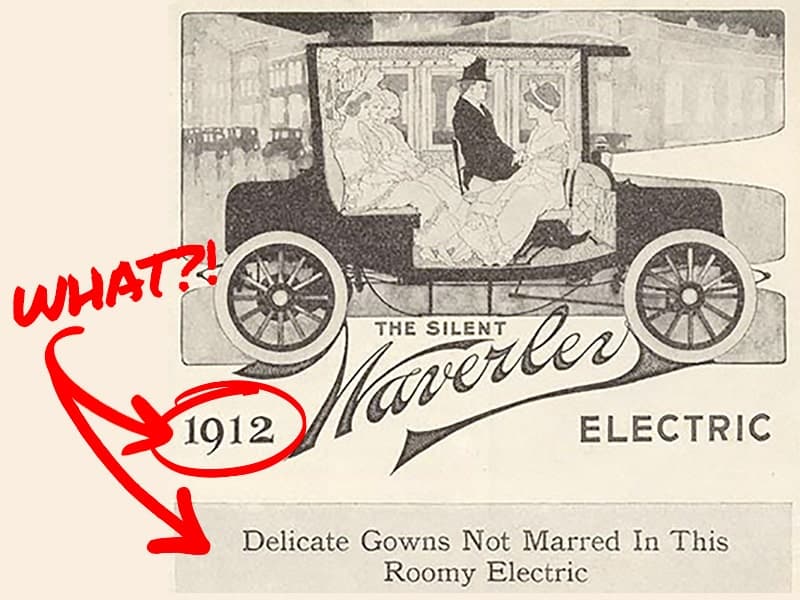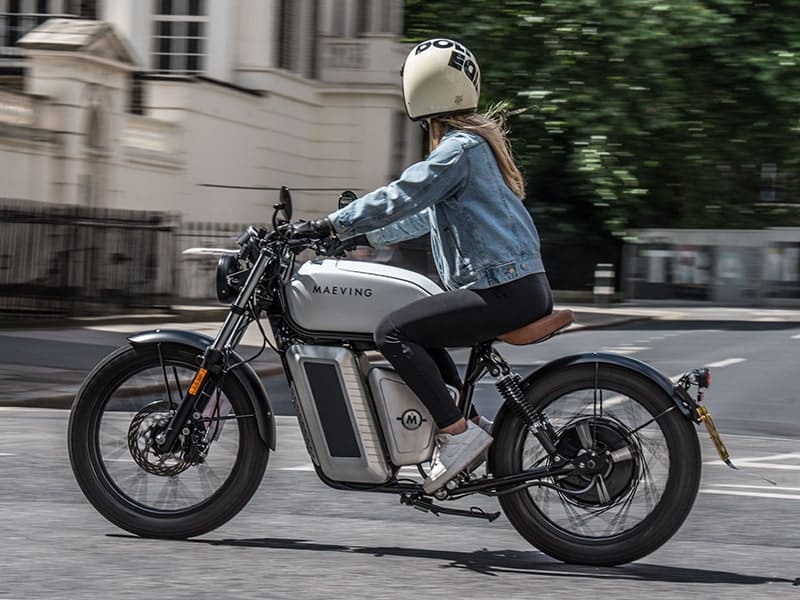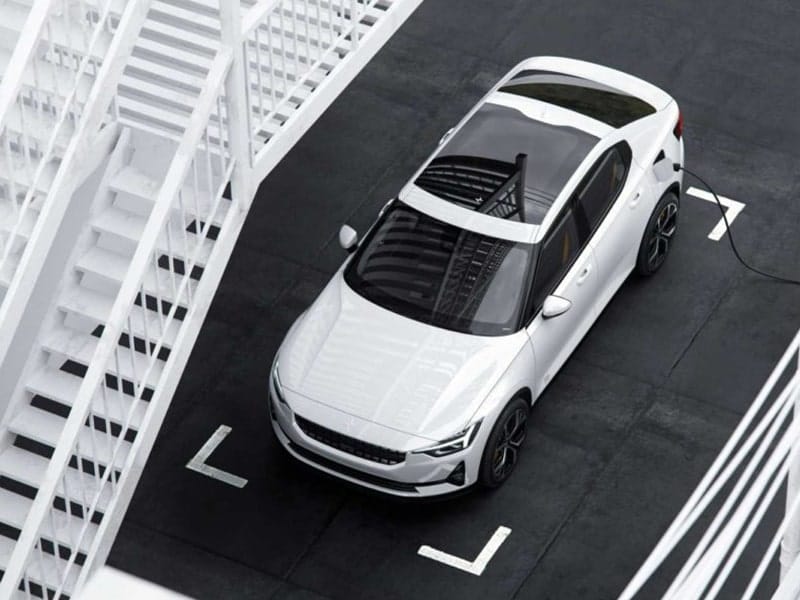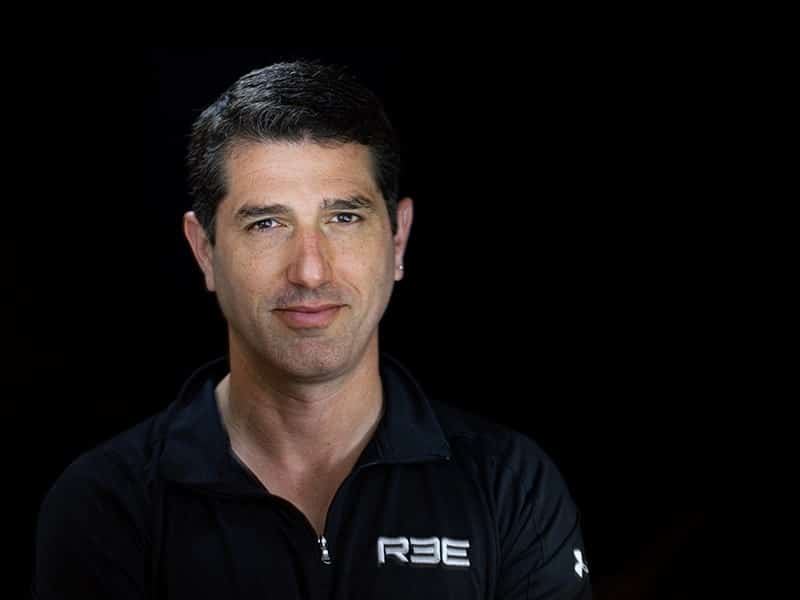
Daniel Barel, CEO and founder of REE
Earlier this month, I attended MOVE 2021 – a two day mobility conference at the London ExCEL. Between my conversations with ZipCharge, FleetCharge and REE, I got a fascinating glimpse into the future of the electric vehicle industry – including an unlikely parallel between dogs and EV platforms….
Earlier this month, I attended MOVE 2021 – a two day mobility conference at the London ExCEL. During the conference, I had the pleasure of meeting Jonathan Carrier and Richie Sibal, the co-founders of ZipCharge. Between them their CVs look like an engineering careers fair programme, listing Jaguar Land Rover, Mazda, Lotus, McLaren, Gordon Murray and Delphi to name a few. Over the past 18 months, the pair have created what can only be described as a portable wheely suitcase charger that can deliver 40 miles of range to your electric vehicle within 25 minutes. The device, which can also be chucked in the boot (albeit with a fraction more effort than lifting an oversized bag for a 10 day all inclusive holiday), I had thought was intended to alleviate charging anxiety for those without access to off-street parking. However, on talking to Jonathan and Richie there are so many more use cases that this product could spark (pun intended). Imagine being a tradesperson who’s vehicle will be parked at a customer’s house whilst [insert name of trade] is being completed. Suddenly, charging does not need to be a conscious or planned part of someone’s day and critically, will no longer take up time that they won’t be paid for. Data from the smart device could tell local councils where the gaping holes in charging networks exist or garages could loan them as EV-spot-of-bother-jerry-cans.

ZipCharge’s portable charger
I then bumped into the team from FleetCharge and enthusiastically regaled my tales of ZipCharge. The team, who are admittedly trying to solve the same problem only this time by creating a sort of Airbnb for charging, looked slightly peeved at my unfettered enthusiasm.
I also met with R3Charge, a hotel booking platform that shows you the most convenient charging options, and Lightyear – a solar powered car, that in theory negates the need for plug-in charging all together. I don’t exactly consider these organisations as competitors to each other, nor do I believe there will or should be a winner takes all. Tackling charging is a major pain point that exists in the market precisely due to the current absence of the very solutions being showcased at MOVE. The immovable realities of available space and geography mean that we need a whole host of flexible and immensely practical solutions.
However, the absolute highlight of the day came from meeting REE CEO, Daniel Barel. The 6ft something founder is literally a whirlwind of energy and despite the rather dry nature of the conference, at 5pm appeared first-coffee-of-the-morning raring to go. Donning the obligatory mobility startup attire of trainers and company branded sportswear top, we sat down to talk all things REE automotive.
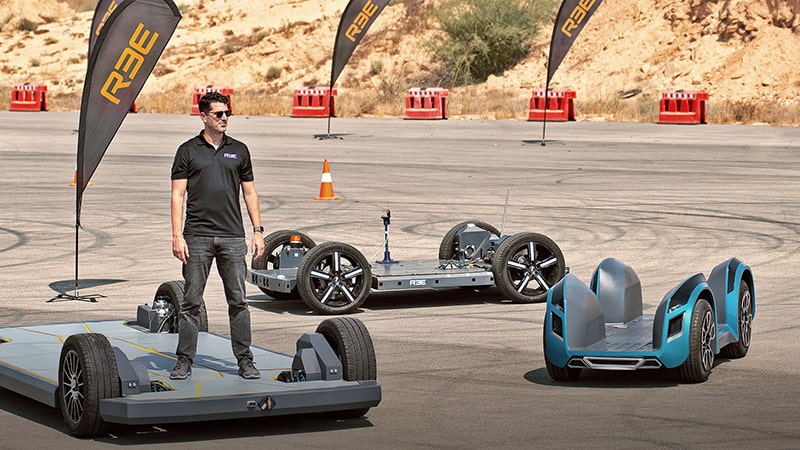
Daniel and the REE platforms
REE, according to Barel, is like the “intel chip of computers” for the EV world, effectively creating the Minimum Viable Product of what constitutes a vehicle. The flat and modular chassis can be configured to make any EV from small last mile delivery vehicles, to a lorry (5 Tonne Payload). This flexibility is made possible by its proprietary REECorner Technology in which all the critical vehicle components (steering, braking, suspension, powertrain and control) are condensed into a compact module surrounding the wheels at the corners of the vehicle. The effect is that the chassis can be scaled according to the vehicle use case without any need to change the core components that make the vehicle function as a vehicle. X-by-wire (everything by wire) replaces physical connections between components (e.g. brake pedal and brakes) with a digital one, and is the key enabler to removing package limitations and achieving this tidy layout (i.e. the game of component tetris to try and fit everything neatly into the vehicle architecture).
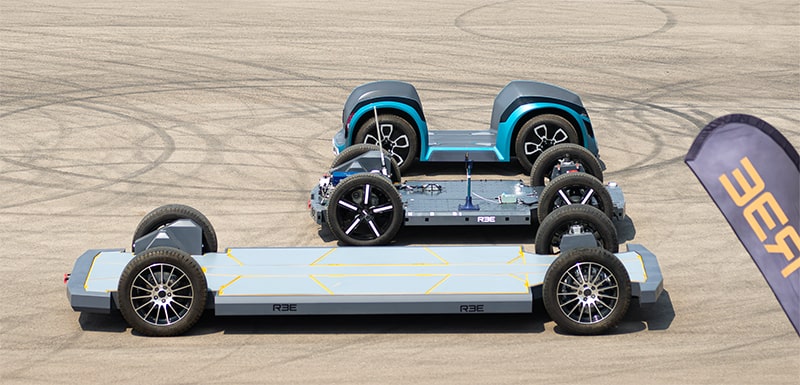
The REE platforms
The platform is now an essentially blank, but highly functional canvas, allowing customers to build almost anything on top of – an EV equivalent of roller skates in which the skater can wear any shoe of any size. Interestingly REE describes itself as being agnostic to the three key mobility trends of autonomy, electrification and mission specific vehicles. In other words, it’s ready for any of those trends to unfold in whichever way they ultimately do. I asked Daniel about this, to which he said “You cannot bet on a particular trajectory and hope it will work”.

Platforms that can have any ‘Top Hat’ put on top
At this point my mind starts wondering about the many permutations of ‘future mobility’ products that could be realised. In this version of events, do customers start to bypass OEMs all together and commission very bespoke vehicles? Premier Inn orders bunk beds on wheels, the Pope a popemobile, Vera Wang a commissioning suite, remote villages a set of mobile schools or hospitals, disaster relief organisations drone distribution vehicles – the list is well and truly endless.
However, for every permutation, the more bespoke the vehicles become and the smaller the batch size. Unit economics mean mass produced items are so much cheaper than their bespoke counterparts. Coupled with the cost of the REECorners whose novelty and IP mean they can’t be cheap, and it’s difficult to see how the REE value proposition is a profitable one.
I put this to Daniel whose gleeful animation told me he was hoping for this line of enquiry. “It’s a question of a full system approach to problem solving”. Unlike many of the other EV startups that have stormed onto the scene in recent years with ambitions for initially costly vertical integration and their own assembly lines, REE intends to make a horizontal play.
Traditional factories and assembly lines are often criticised and resented for being old, inflexible and expensive to upgrade. However, they are also brimming with a century of automotive trial and error, lessons learnt and expertise ripe to continue improving upon. As such REE is maximising the use of spare capacity in existing assembly lines to build vehicles. These ‘integration centres’ are then very light on both OPEX and CAPEX, saving REE enormous costs in bringing products to market.
I still have so many questions about REE and want to see it succeed. A quick look at Daniel’s LinkedIn is cause for optimism, clearly painting him as a relentless and natural entrepreneur. I asked Daniel about an apparent CV tangent and his brief foray with pet-tech in 2012. “Oh yeah that, that was a bet with a friend”. Daniel, having lost the bet, had to write a business model and pitch a ‘terrible idea’ to investors. He pitched Wooof, a social media platform for dogs which turned out, much to Daniel’s surprise, to be an overwhelming success. People in Israel used the app in all sorts of unforeseen ways – from timing dog walks to avoid certain neighbours to dating. “It turns out, if you empower people with the right tools, they can use them for whatever they need to do.”

Daniel founded Wooof – a social media platform for dogs
My final question was to ask Daniel what vehicle he would make for himself using REE’s configurator. After careful consideration he said “something extremely extremely practical. My practical is of course different from your practical, and yours is different from someone else’s.”
Between these last two questions, it twigged. True creativity is enabled by true practicality. Practicality that has done all of the heavy work to eliminate complexity and made best use of what already exists. Reduce the noise and that’s where unfettered imagination can leap out of fantasy and instead manifest in real, tangible solutions. We’ve got the tools, now let’s get going.
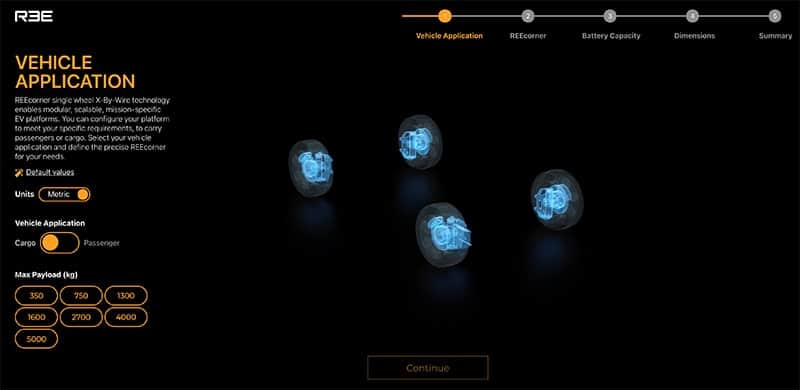
REE vehicle configurator
About the author
Imogen Pierce works in sustainable mobility and future technology for Fully Charged and ethical AI company Bubblr. She is an alumni of electric vehicle startup Arrival where she was Head of City Engagement and Integration working with cities to understand, develop and accelerate their future mobility ambitions. Imogen has also worked in Experience Strategy looking at future technology and mobility trends. Prior to Arrival, Imogen was an aerodynamicist at Jaguar Land Rover before running the company’s technology and innovation communications. She can be found on Medium musing and wittering about sustainable mobility.




